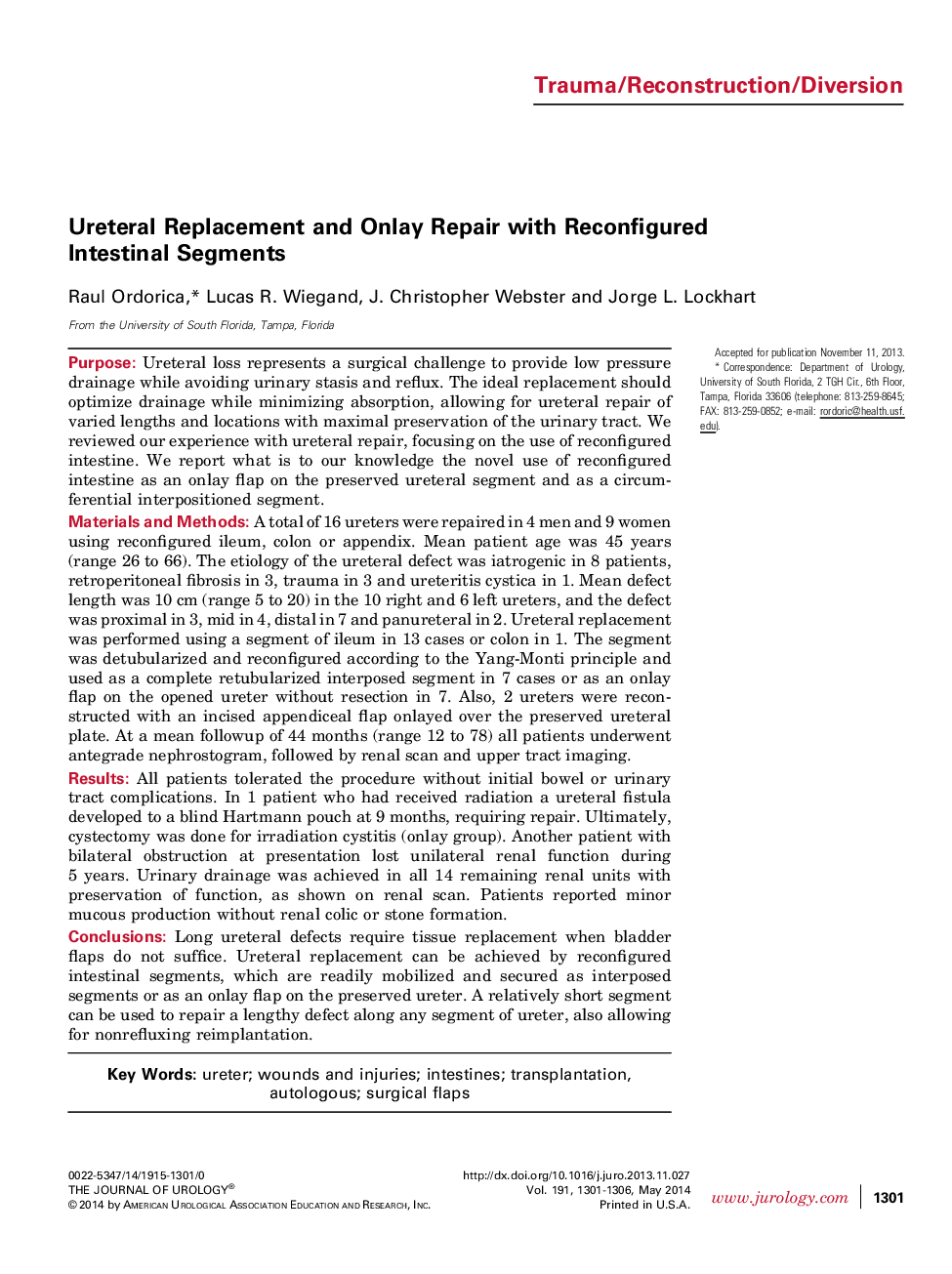| کد مقاله | کد نشریه | سال انتشار | مقاله انگلیسی | نسخه تمام متن |
|---|---|---|---|---|
| 3860648 | 1598904 | 2014 | 6 صفحه PDF | دانلود رایگان |
PurposeUreteral loss represents a surgical challenge to provide low pressure drainage while avoiding urinary stasis and reflux. The ideal replacement should optimize drainage while minimizing absorption, allowing for ureteral repair of varied lengths and locations with maximal preservation of the urinary tract. We reviewed our experience with ureteral repair, focusing on the use of reconfigured intestine. We report what is to our knowledge the novel use of reconfigured intestine as an onlay flap on the preserved ureteral segment and as a circumferential interpositioned segment.Materials and MethodsA total of 16 ureters were repaired in 4 men and 9 women using reconfigured ileum, colon or appendix. Mean patient age was 45 years (range 26 to 66). The etiology of the ureteral defect was iatrogenic in 8 patients, retroperitoneal fibrosis in 3, trauma in 3 and ureteritis cystica in 1. Mean defect length was 10 cm (range 5 to 20) in the 10 right and 6 left ureters, and the defect was proximal in 3, mid in 4, distal in 7 and panureteral in 2. Ureteral replacement was performed using a segment of ileum in 13 cases or colon in 1. The segment was detubularized and reconfigured according to the Yang-Monti principle and used as a complete retubularized interposed segment in 7 cases or as an onlay flap on the opened ureter without resection in 7. Also, 2 ureters were reconstructed with an incised appendiceal flap onlayed over the preserved ureteral plate. At a mean followup of 44 months (range 12 to 78) all patients underwent antegrade nephrostogram, followed by renal scan and upper tract imaging.ResultsAll patients tolerated the procedure without initial bowel or urinary tract complications. In 1 patient who had received radiation a ureteral fistula developed to a blind Hartmann pouch at 9 months, requiring repair. Ultimately, cystectomy was done for irradiation cystitis (onlay group). Another patient with bilateral obstruction at presentation lost unilateral renal function during 5 years. Urinary drainage was achieved in all 14 remaining renal units with preservation of function, as shown on renal scan. Patients reported minor mucous production without renal colic or stone formation.ConclusionsLong ureteral defects require tissue replacement when bladder flaps do not suffice. Ureteral replacement can be achieved by reconfigured intestinal segments, which are readily mobilized and secured as interposed segments or as an onlay flap on the preserved ureter. A relatively short segment can be used to repair a lengthy defect along any segment of ureter, also allowing for nonrefluxing reimplantation.
Journal: The Journal of Urology - Volume 191, Issue 5, May 2014, Pages 1301–1306
